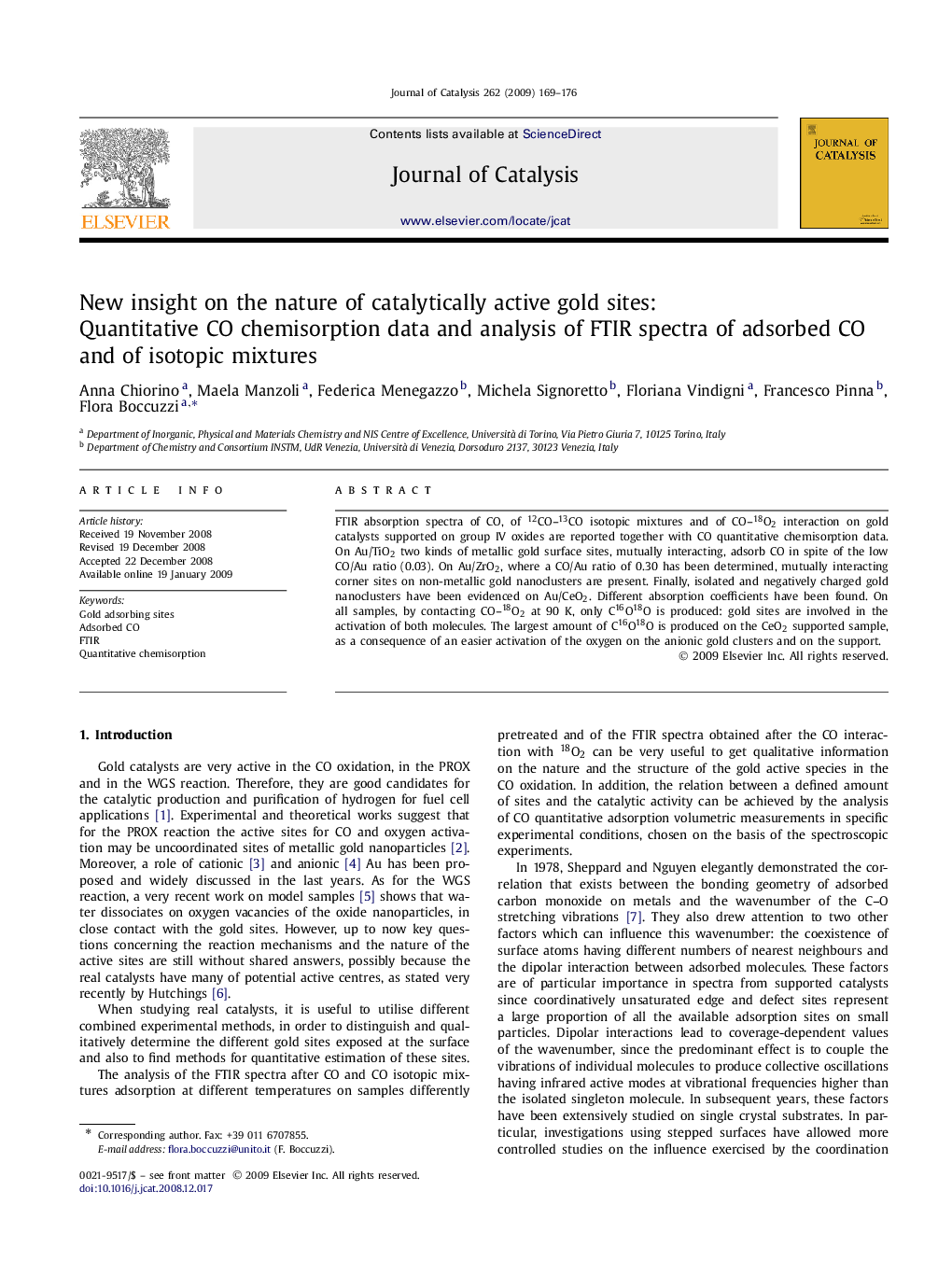| کد مقاله | کد نشریه | سال انتشار | مقاله انگلیسی | نسخه تمام متن |
|---|---|---|---|---|
| 62255 | 47629 | 2009 | 8 صفحه PDF | دانلود رایگان |

FTIR absorption spectra of CO, of 12CO–13CO isotopic mixtures and of CO–18O2 interaction on gold catalysts supported on group IV oxides are reported together with CO quantitative chemisorption data. On Au/TiO2 two kinds of metallic gold surface sites, mutually interacting, adsorb CO in spite of the low CO/Au ratio (0.03). On Au/ZrO2, where a CO/Au ratio of 0.30 has been determined, mutually interacting corner sites on non-metallic gold nanoclusters are present. Finally, isolated and negatively charged gold nanoclusters have been evidenced on Au/CeO2. Different absorption coefficients have been found. On all samples, by contacting CO–18O2 at 90 K, only C16O18O is produced: gold sites are involved in the activation of both molecules. The largest amount of C16O18O is produced on the CeO2 supported sample, as a consequence of an easier activation of the oxygen on the anionic gold clusters and on the support.
12CO and 12CO–13CO FTIR absorption spectra combined with quantitative chemisorption data pointed out the relationship between the nanostructure and the physical/chemical properties of Au catalysts supported on group IV oxides. On Au/TiO2, the CO adsorbing sites are mutually interacting edge and corner sites of Au metallic particles, while on Au/ZrO2, the adsorbing sites are mutually interacting corners of non metallic Au nanoclusters. Finally, almost isolated and negatively charged Au nanoclusters have been evidenced on CeO2. The differences between the absorption coefficients of CO on Au sites have been discussed. On all samples, by contacting CO–18O2 at 90 K, only C16O18O is produced, suggesting that only the gold sites are involved in the activation of both molecules.Figure optionsDownload high-quality image (58 K)Download as PowerPoint slide
Journal: Journal of Catalysis - Volume 262, Issue 1, 15 February 2009, Pages 169–176